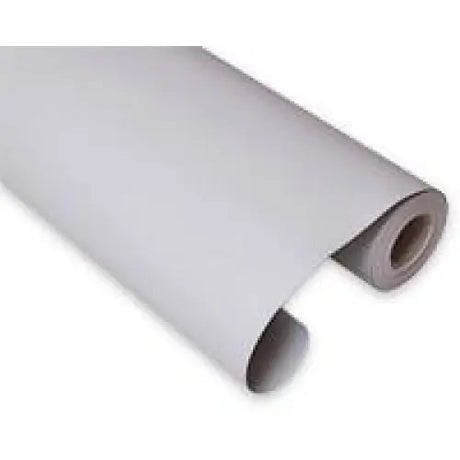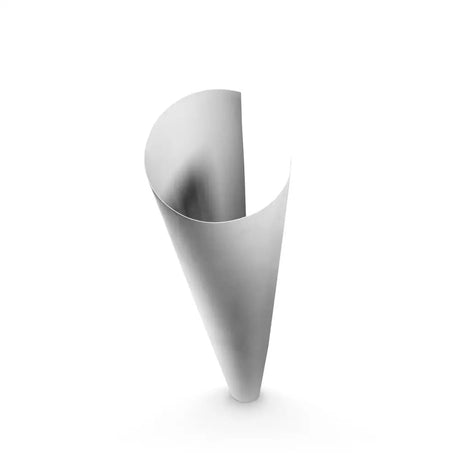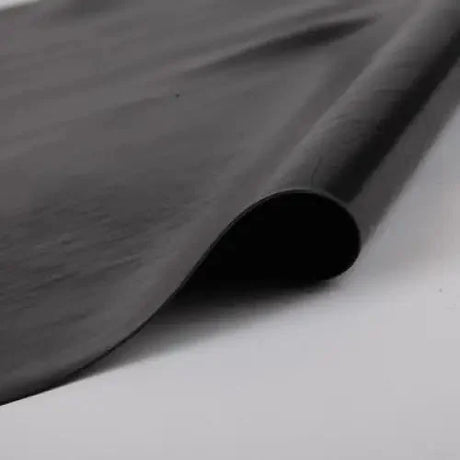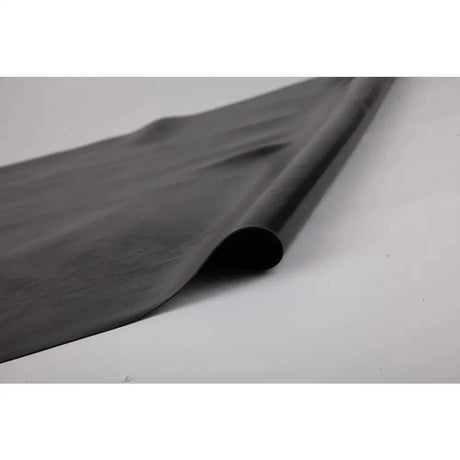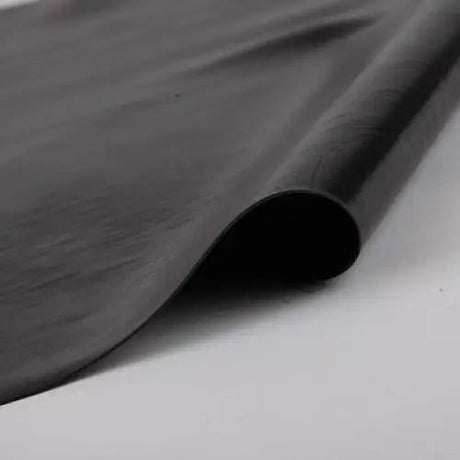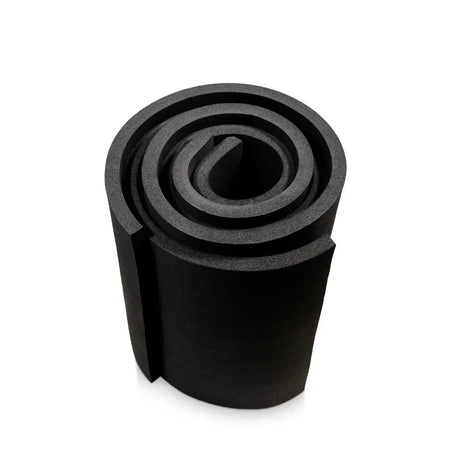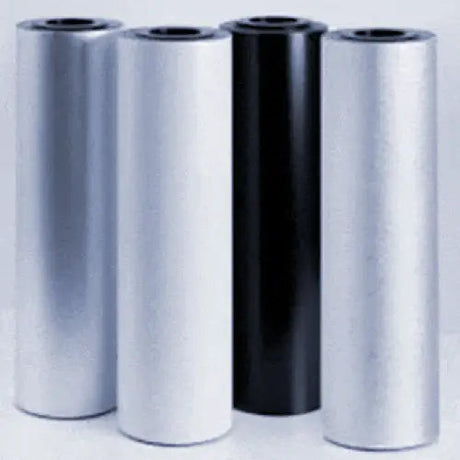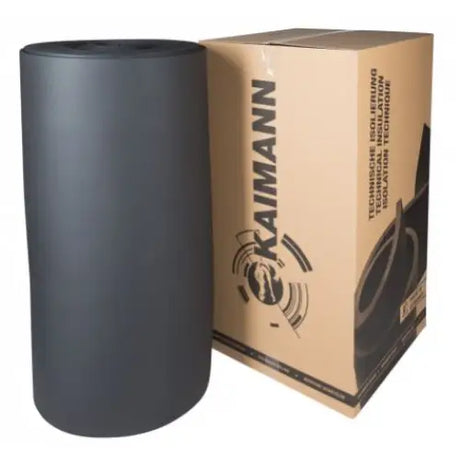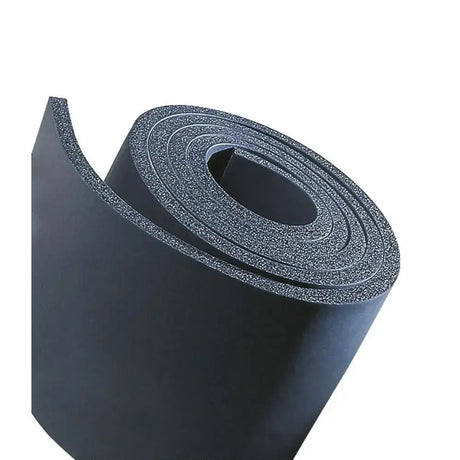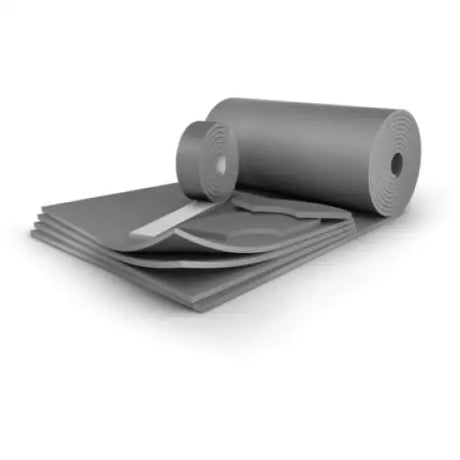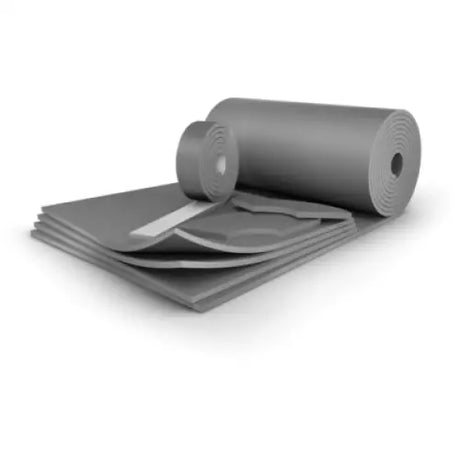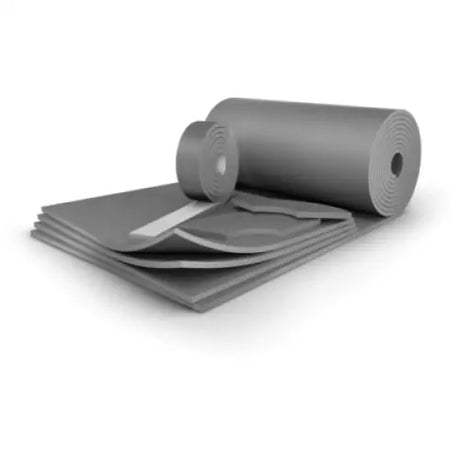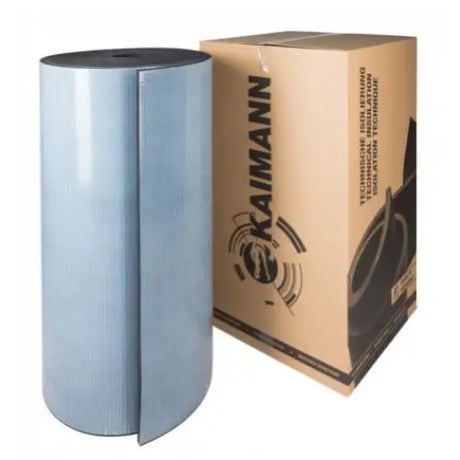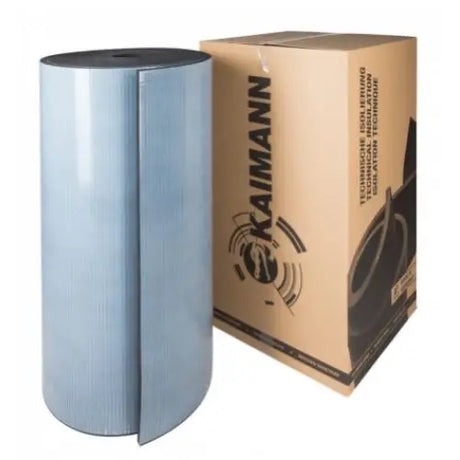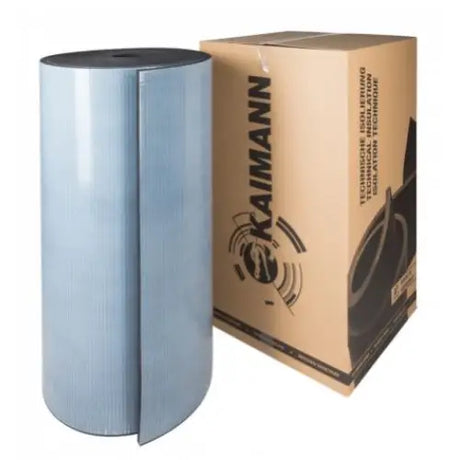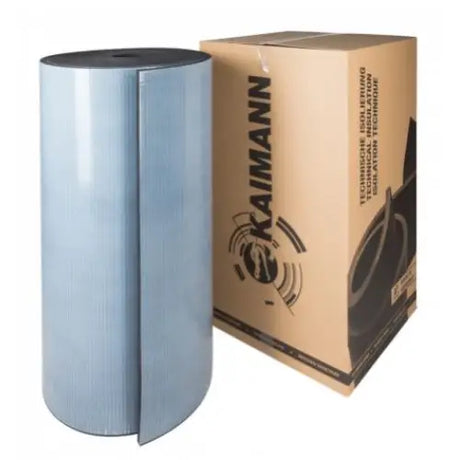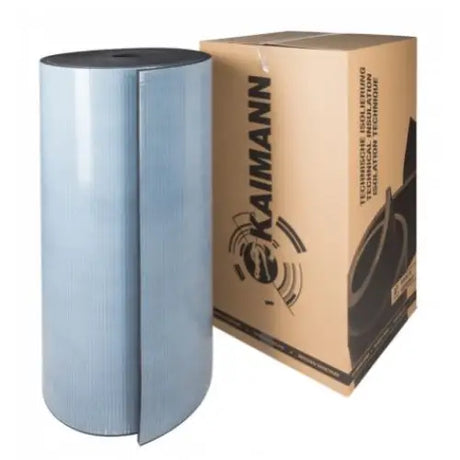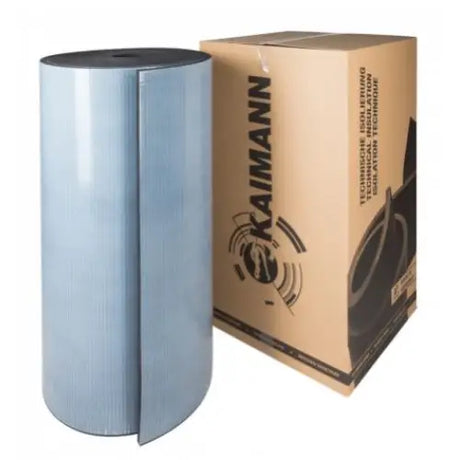Insulation & More
Cut to Size Sheeting for Isogenopak Insulation Cladding
From £233Unit price /UnavailableArmacell
Armaflex Sheet Insulation Lagging Black Foam Class O Nitrile Rubber (0.5 x 2m rolls)
From £4235Unit price /UnavailableInsulation & More
Ultra-Clad Duct Insulation Cladding (61m2 Per Roll)
£35375Unit price /UnavailableIn stockKaimann
Kaiflex EPDMplus Sheet 25mm Black Continuous Standard
£25488Unit price /UnavailableIn stockKaimann
Kaiflex ST Sheet 50mm Black Continuous Self-Adhesive
£29919Unit price /UnavailableIn stockKaimann
Kaiflex ST Sheet 40mm Black Continuous Self-Adhesive
£35034Unit price /UnavailableIn stockKaimann
Kaiflex ST Sheet 32mm Black Continuous Self-Adhesive
£32932Unit price /UnavailableIn stockKaimann
Kaiflex ST Sheet 25mm Black Continuous Self-Adhesive
£34630Unit price /UnavailableIn stockKaimann
Kaiflex ST Sheet 19mm Black Continuous Self-Adhesive
£34911Unit price /UnavailableIn stockKaimann
Kaiflex ST Sheet 13mm Black Continuous Self-Adhesive
£38099Unit price /UnavailableIn stock
Insulation Sheets - Guide
Insulation sheets are an essential component of energy-efficient building and construction. Proper insulation helps maintain comfortable temperatures, reduce energy costs, prevent moisture issues, and create quieter indoor spaces. This guide covers the key types, applications, and benefits of insulation sheets.
What are Insulation Sheets?
Insulation sheets are pre-cut panels of insulation material used to insulate walls, ceilings, floors, pipes, ducts, and more. They come in various materials like fiberglass, mineral wool, polystyrene foam, polyurethane foam, and natural fibers. The sheets are produced in standard sizes to fit common construction applications.
Key benefits of insulation sheets:
- Pre-cut for convenience
- Consistent thickness for uniform insulation
- Variety of materials for different needs
- Cost-effective compared to loose-fill insulation
- Easy installation in new builds or renovations
Major Types of Insulation Sheets
Nitrile Rubber Insulation Sheets
Nitrile rubber is a synthetic rubber known for its resistance to oils, fuels, and chemicals. Nitrile rubber insulation sheets offer excellent durability and flexibility. Key benefits include:
- High resistance to oils, greases, and solvents
- Maintains insulation properties under compression
- Good weathering and aging properties
- Provides noise dampening
- Medium thermal conductivity for energy efficiency
Nitrile rubber insulation is commonly used for:
- Pipe insulation in chemical plants
- Tank and vessel insulation
- Refrigeration insulation
- Oil and gas pipe insulation
- Noise control applications
Nitrile sheets come in various densities and thicknesses. Closed-cell nitrile foam provides thermal efficiency. Some have fiberglass reinforcing for dimensional stability. Nitrile insulation can withstand temperatures from -40°F to 220°F. Proper installation is key for optimum performance.
EPDM Insulation Sheets
EPDM (ethylene propylene diene monomer) is a synthetic rubber known for its flexibility, weathering resistance, and moisture protection. Key benefits of EPDM insulation sheets include:
- Highly flexible, easy to wrap around curved surfaces
- Excellent resistance to outdoor weathering
- Effective moisture and water vapor barrier
- Medium thermal conductivity values
- Good acoustic dampening properties
- UL fire rated for flame spread and smoke development
Common applications of EPDM insulation sheets:
- Pipe insulation for HVAC and plumbing systems
- Duct insulation
- Roofing insulation
- Soundproofing in buildings
- Exterior wall insulation
EPDM insulation sheets come in various widths, lengths, and thicknesses. They can be installed using adhesives or mechanical fasteners. EPDM provides reliable thermal and moisture insulation for indoor and outdoor applications.
Fiberglass
Fiberglass insulation sheets are one of the most common and affordable options. They consist of extremely fine glass fibers bonded with thermosetting resins. Fiberglass provides effective thermal and acoustic insulation. It's available in faced and unfaced versions.
Mineral Wool
Mineral wool insulation is made from natural rock or slag. It has excellent fire resistance and acoustical qualities. Mineral wool sheets come in stone wool and glass wool varieties. They are unfaced.
Polystyrene Foam
Extruded polystyrene foam (XPS) and expanded polystyrene foam (EPS) sheets provide rigid thermal insulation. EPS is lightweight while XPS offers higher density and R-value. Polystyrene insulation resists moisture and is easy to install.
Polyurethane Foam
Polyurethane foam sheets have the highest R-value per inch compared to other types of insulation. They offer superb thermal efficiency and moisture resistance. Polyurethane is available in medium density or high density sheets.
Natural Fiber
Natural fiber insulation sheets are made from renewable resources like cotton, sheep wool, hemp, straw, and cork. They are environment-friendly options that also provide effective thermal and acoustic insulation.
Key Applications of Insulation Sheets
- Walls - Interior wall insulation between studs or exterior continuous insulation
- Attics - Insulation laid between and over ceiling joists
- Basements - Exterior basement wall insulation
- Floors - Insulation under floors over crawl spaces
- HVAC Ducts - Duct wrap insulation to prevent heat loss/gain
- Pipes - Pipe insulation to maintain water temperature
- Roofing - Tapered roof insulation for drainage and insulation
- Refrigeration - Chiller and freezer insulation
Proper installation is key to maximize performance. Follow manufacturer guidelines on how to best install their insulation sheets for the specific application. Consider factors like insulation thickness, facing direction, taping seams, and use of adhesive/fasteners.
Key Benefits of Insulation Sheets
- Improved energy efficiency - Reduce heating and cooling costs
- Prevent condensation and moisture issues
- Maintain comfortable indoor temperatures
- Reduce noise transmission for better acoustics
- Faster installation than loose-fill insulation
- Consistent insulation coverage without gaps
- Available for a wide range of applications
- Fire resistance with mineral wool and fiberglass
- Sustainable options like natural fiber and recycled content
When selecting insulation, consider the R-value, location, and desired properties like fire resistance, moisture protection, and sound dampening. Work with insulation manufacturers and contractors to determine the optimal materials and installation methods. Proper insulation sheets help buildings perform better for years to come.
Why Use Insulation Sheets Over Other Options?
For certain applications, insulation sheets offer advantages over other insulation methods like pipe wraps, duct wraps, loose-fill insulation, and spray foam.
Easier Installation - Insulation sheets are pre-cut to consistent sizes which speeds up installation. No need to cut and wrap pipe and duct insulation. Loose-fill insulation requires proper depth and density control.
Better Coverage - Sheets provide complete, uniform insulation coverage without gaps or compression issues. Loose-fill and spray foam can have inconsistent depth and gaps.
Moisture Protection - Faced insulation sheets include vapor retarders that protect against condensation and moisture issues. Spray foam risks poor curing and cell structure in moist environments.
Acoustics - Insulation sheets help deaden sound transmission through walls and between floors. Lose-fill does not provide the same noise dampening.
Cost - Material cost of sheets may be cheaper than specialty pre-formed pipe and duct wraps. Labor cost is also lower with easier installation.
Versatility - Insulation sheets can be used in many applications like floors, walls, HVAC, roofing etc. Pre-formed wraps are designed for specific uses.
Aesthetics - Faced sheets provide a neat finished interior look. Loose-fill and spray foam may have uneven surfaces.
For new construction or renovations, insulation sheets often provide the best combination of cost-effectiveness, ease of installation, consistency, and versatility. Consult insulation manufactures for optimal sheet materials and thicknesses for your specific project requirements.
How Insulation Sheets and Cladding Work Together
Similarities
- Both provide thermal insulation to improve building energy efficiency
- Come in sheet good form for easy installation
- Offer high R-value per inch of thickness
- Help control condensation and moisture issues
- Can provide noise reduction
Differences
Purpose: Insulation sheets are primarily for thermal insulation. Cladding like PIB also provides weather protection, fire resistance, and aesthetic finish.
Location: Insulation sheets go under siding or roofing. Cladding is the exterior finish layer for walls or roof.
Composition: Insulation sheets are made from various materials like fiberglass, foam, and wool. Cladding is made from materials like polyiso foam, OSB, and vinyl.
Installation: Insulation sheets are often secured between studs or joists. Exterior cladding is attached directly to the exterior sheathing.
Exposure: Insulation sheets are protected behind cladding. Cladding is exposed to outdoor elements.
Vapor Permeability: Some insulation sheets have vapor barriers. Cladding is designed to be vapor permeable.
Fire Rating: Cladding requires specific fire and wind resistance testing. Insulation sheets may be fire resistant but are not exterior-rated.
R-value: Thicker insulation sheets provide higher R-value. Cladding provides continuous insulation but lower R-value.
Cost: Insulation sheets are cheaper. Cladding has a higher material and installation cost.
Generally, insulation sheets provide interior thermal insulation while exterior cladding boards protect against weather, fire, moisture, and also insulate. The two work together to create an energy-efficient building envelope.

